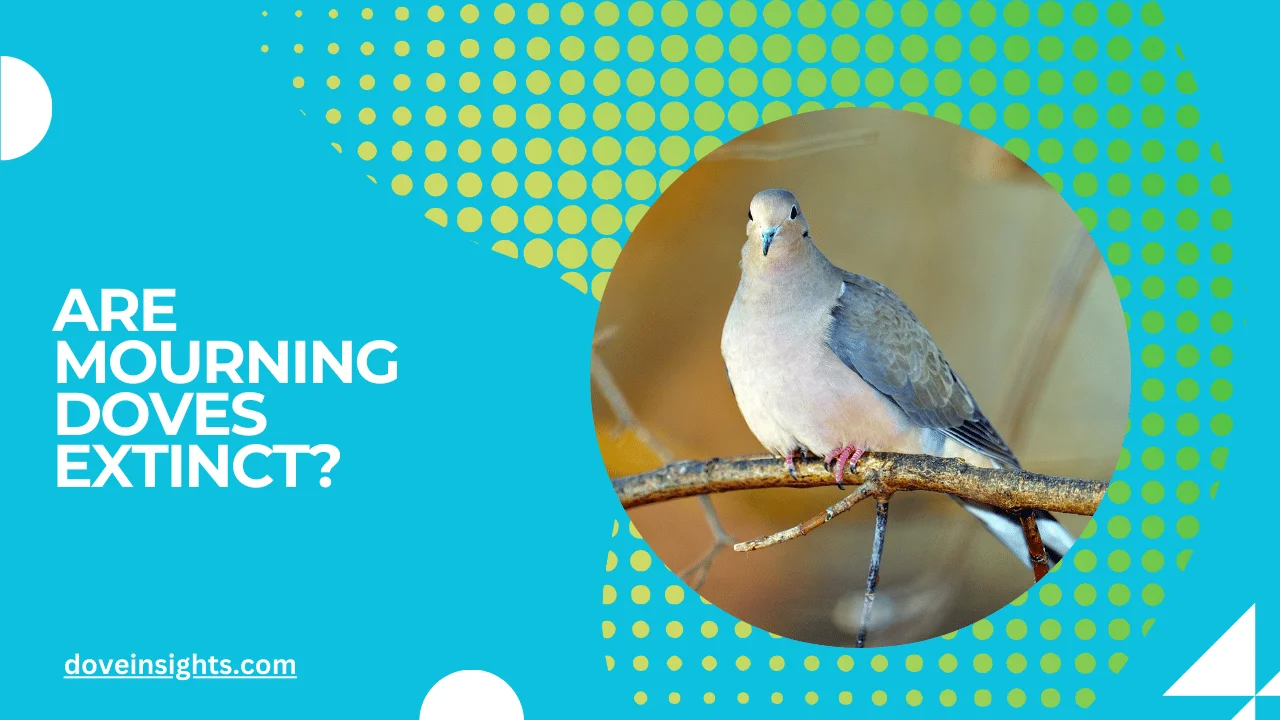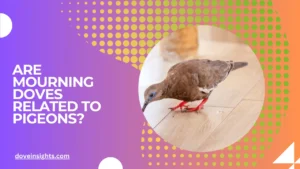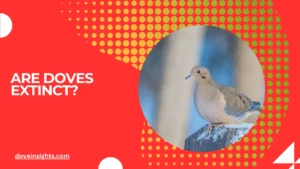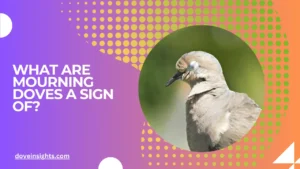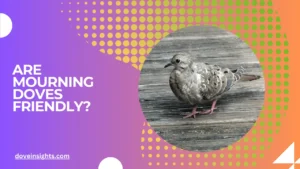Every year, the gentle cooing of mourning doves fills the air, a familiar sound for many who live in suburban and rural areas across North America.
Known for their slender, graceful bodies and soft, mournful calls, these birds are often seen perched on telephone wires or foraging in fields. However, there’s a growing concern: are mourning doves going extinct?
With their declining population in certain regions and the pressures of modern-day environmental changes, this question has become more pressing.
For bird enthusiasts, environmentalists, and even casual observers, it’s important to understand the fate of this beloved species. In this article, we’ll explore whether mourning doves are truly at risk of extinction, the factors influencing their numbers, and what can be done to protect them.
Contents
The Status of Mourning Doves: A Brief Overview
Mourning doves are not extinct, but their population has been fluctuating. While their numbers may appear abundant in some areas, they are facing growing challenges that could affect their long-term survival.
In fact, mourning doves are one of the most abundant bird species in North America, with millions of individuals recorded each year. However, their conservation status varies across different regions.
The North American Breeding Bird Survey reveals that mourning dove populations have remained relatively stable overall, but they have experienced localized declines, especially in urbanized or highly developed areas.
This section will explore the population trends of mourning doves, examining how conservationists and ornithologists track their numbers and the key indicators used to gauge their health.
By considering both short-term and long-term data, we can form a clearer picture of their current standing and determine whether there’s an urgent need for concern.
Why Are Mourning Doves Important to the Ecosystem?
Mourning doves may seem like simple, everyday creatures, but they play an essential role in their ecosystems.
These birds contribute to the balance of nature by helping to control seed dispersal. As primarily seed-eaters, mourning doves spread plant seeds across large areas, contributing to plant diversity. Additionally, they are a food source for a variety of predators, including hawks and other birds of prey.
Their presence also signals the health of the environment. The decline of mourning doves could indicate broader ecological issues such as habitat loss, climate change, or the impact of pesticides.
Understanding their role in maintaining the delicate balance of ecosystems helps emphasize why we should be concerned about their future and the factors that could threaten their survival.
The Threats Facing Mourning Doves
While mourning doves are not currently classified as endangered, they face a variety of threats that could put their population at risk.
Habitat loss due to urbanization and deforestation is one of the most significant challenges. As more natural areas are replaced with concrete jungles, doves lose their ideal nesting sites, food sources, and safe havens.
Another pressing concern is the use of pesticides and herbicides. These chemicals can not only reduce the availability of food for mourning doves but also poison the birds themselves. Furthermore, climate change has caused shifts in migration patterns, and some doves may be struggling to adapt to changing weather conditions.
These cumulative threats could lead to a decline in their population, particularly in areas where these pressures are most intense.
Conservation Efforts and What You Can Do to Help
Despite the challenges facing mourning doves, there are numerous conservation efforts aimed at preserving their habitats and ensuring they continue to thrive.
Organizations like the Cornell Lab of Ornithology and the National Audubon Society actively work to monitor bird populations and advocate for policies that protect bird species. Additionally, local efforts, such as creating bird-friendly spaces in urban areas, planting native plants, and reducing pesticide use, can have a positive impact on mourning dove populations.
On a smaller scale, individuals can contribute by ensuring their properties are welcoming to these birds. This could involve installing birdhouses, avoiding the use of harmful chemicals, and preserving native plants that provide food and shelter.
It’s also important to support organizations that focus on habitat restoration and wildlife protection. These efforts may not only help mourning doves but also support a variety of other species in need of assistance.
Are Mourning Doves Really in Danger?
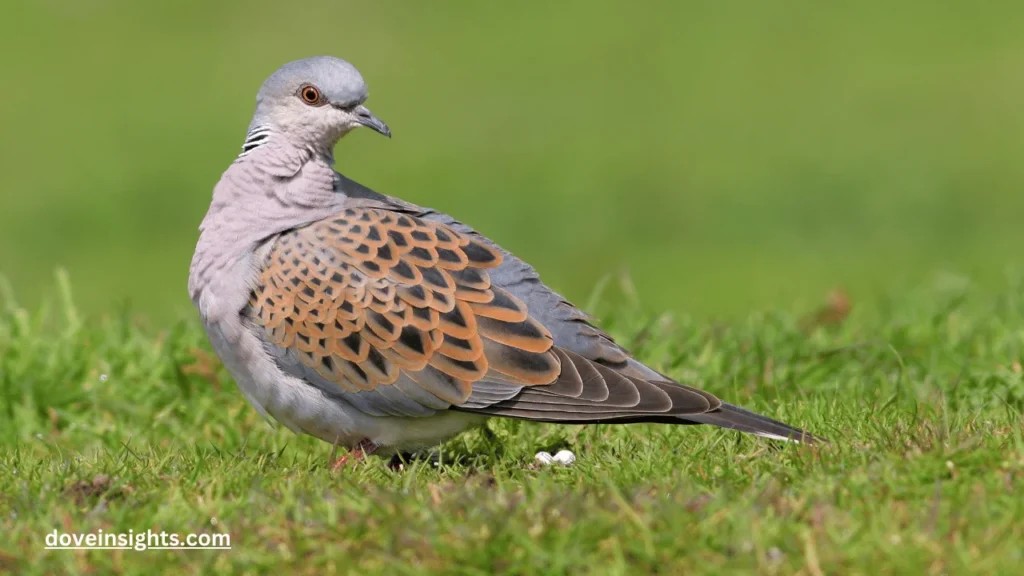
So, are mourning doves in danger of becoming extinct? The answer is more complex than a simple yes or no. While extinction is not imminent, mourning doves face ongoing threats that could significantly affect their populations if left unaddressed.
Conservation efforts are vital to maintaining the health of mourning dove populations, but these efforts must be sustained and supported by both communities and policymakers. By acknowledging the challenges mourning doves face and taking steps to mitigate these threats, we can ensure that these graceful birds remain a familiar sight in the skies for generations to come.
Conclusion
Mourning doves are far from being extinct, but their survival is not guaranteed without concerted efforts to address the various environmental pressures they face.
From habitat loss to pesticide use and climate change, these birds need our attention now more than ever. By supporting conservation programs, preserving habitats, and fostering awareness, we can help ensure that mourning doves continue to thrive.
They are an essential part of our natural world, and it’s up to all of us to protect them for future generations.
FAQ’s
Are mourning doves endangered?
No, mourning doves are not considered endangered. However, some local populations may be at risk due to habitat loss and environmental pressures.
What is the lifespan of a mourning dove?
Mourning doves typically live around 1 to 2 years, though some may live longer in protected environments.
Why are mourning doves called “mourning” doves?
The name “mourning” comes from the bird’s soft, sorrowful cooing sound, which resembles a mournful cry.
How do mourning doves contribute to the ecosystem?
Mourning doves help in seed dispersal, which promotes plant growth and biodiversity, and they are also a key food source for predators.
Can mourning doves adapt to climate change?
Mourning doves are facing challenges related to climate change, including altered migration patterns and changing food availability. Their ability to adapt depends on the severity of these shifts.

